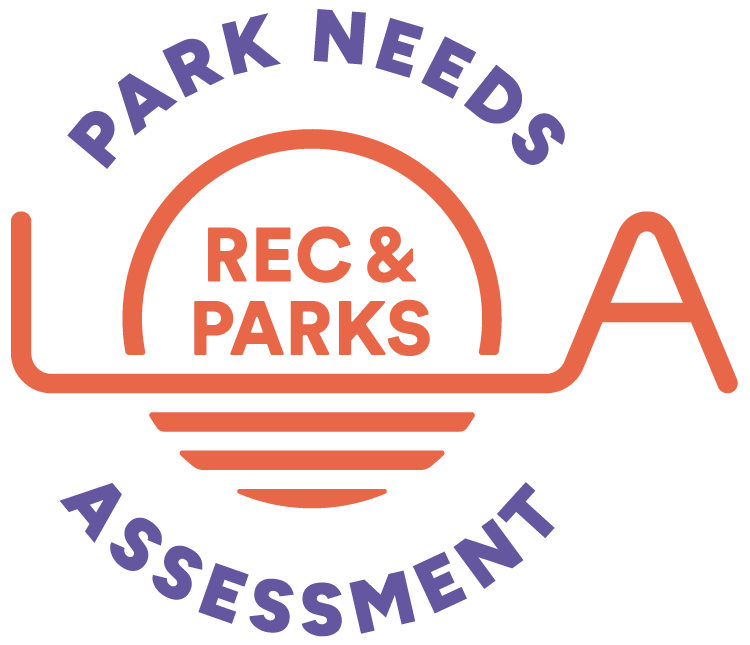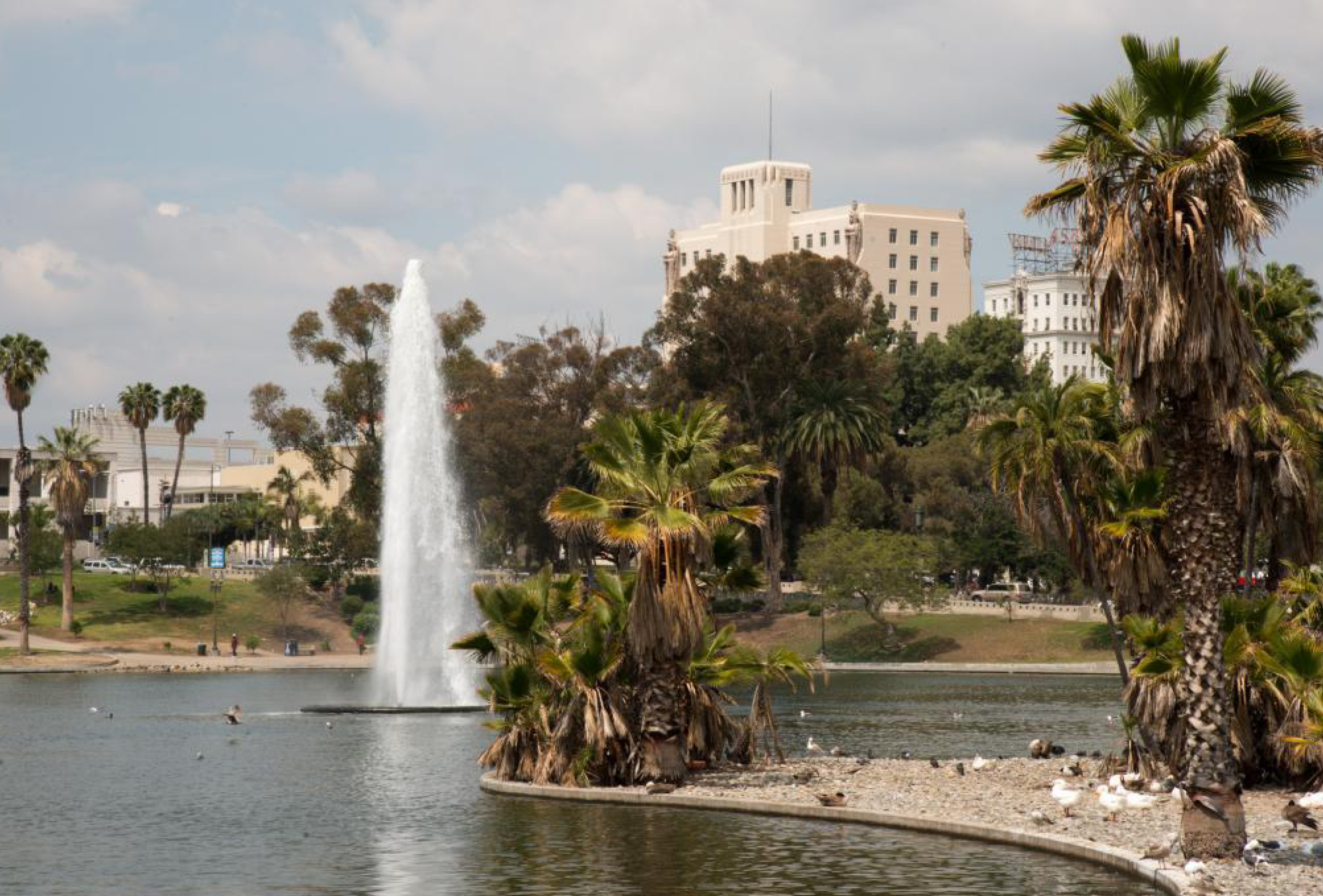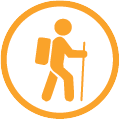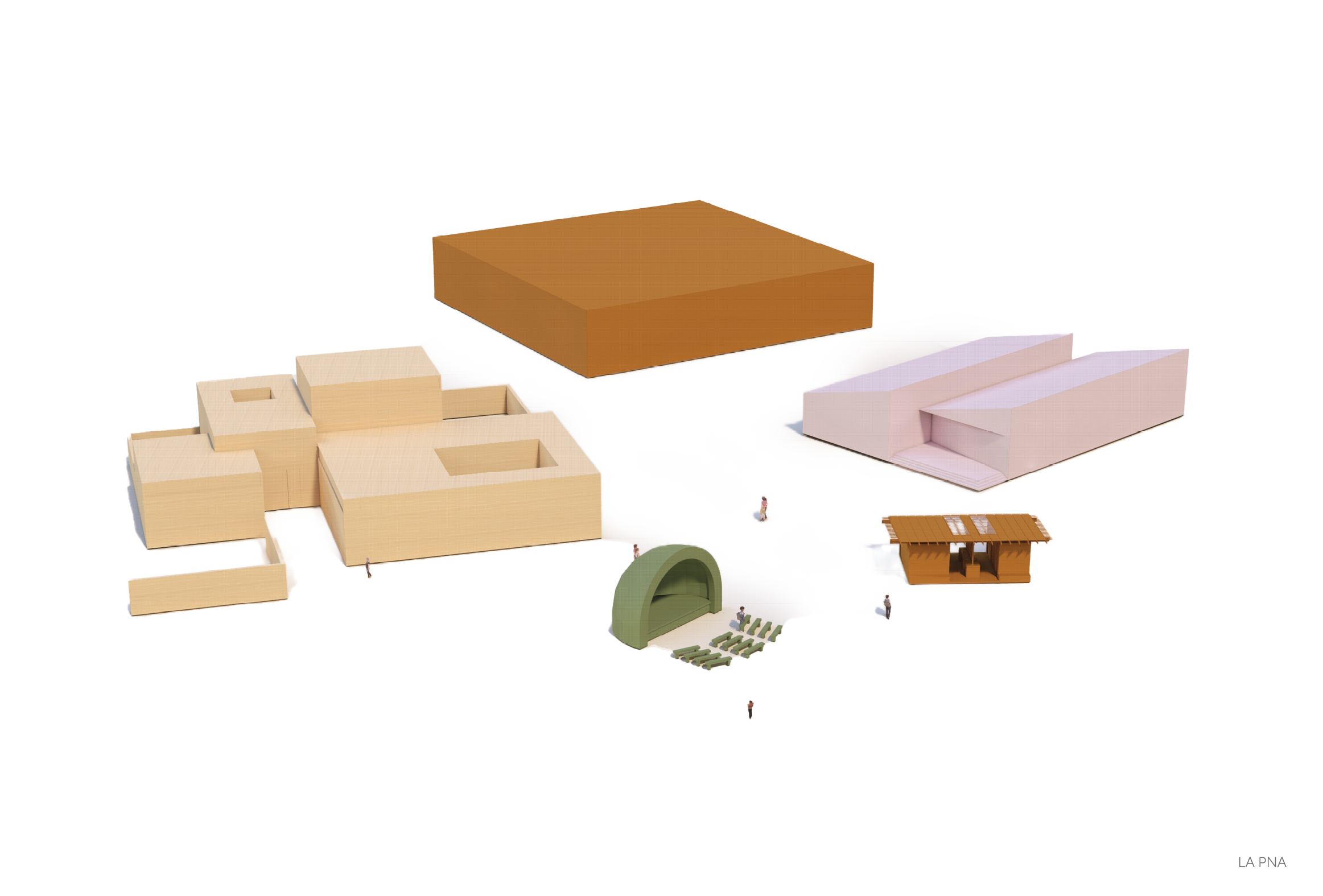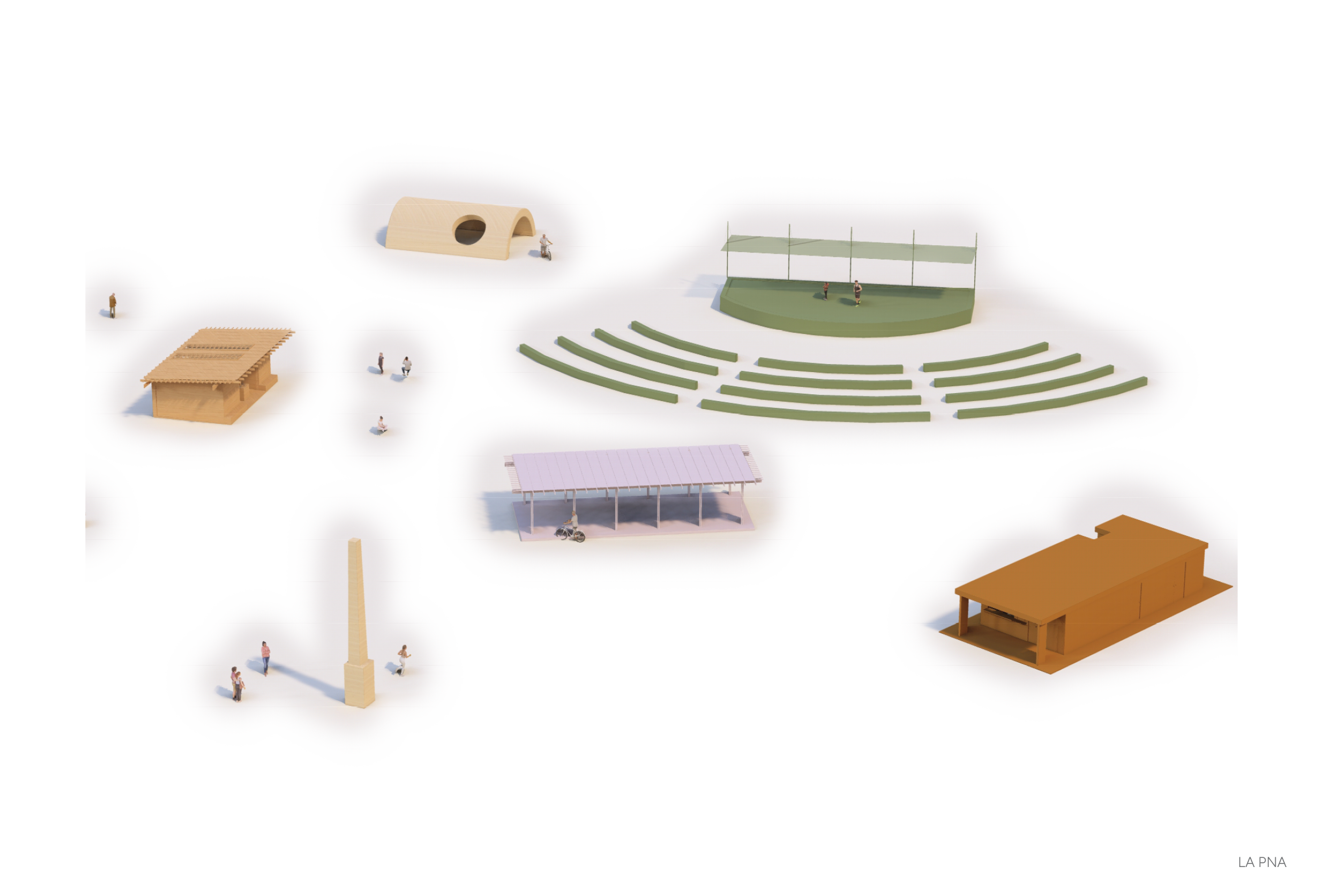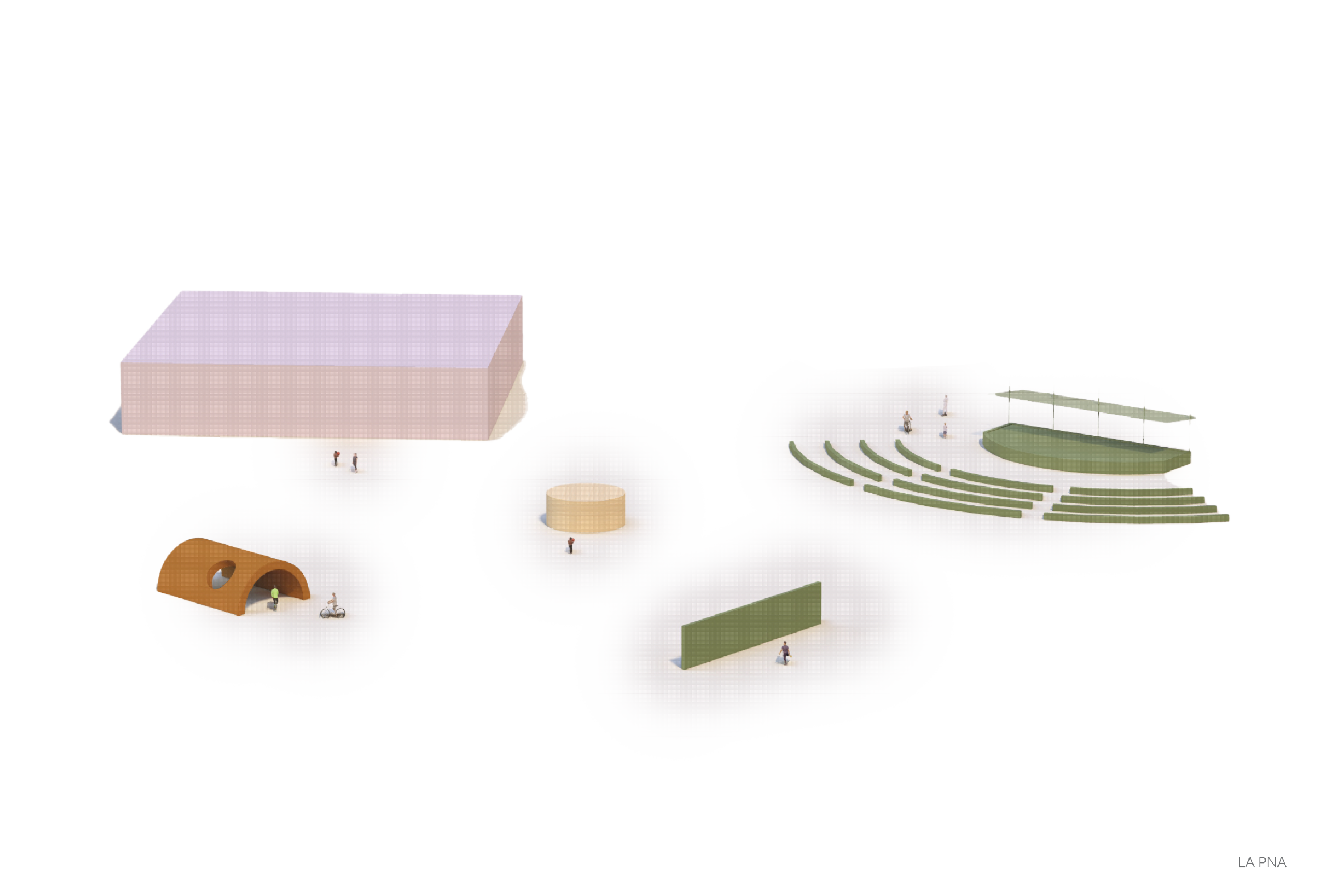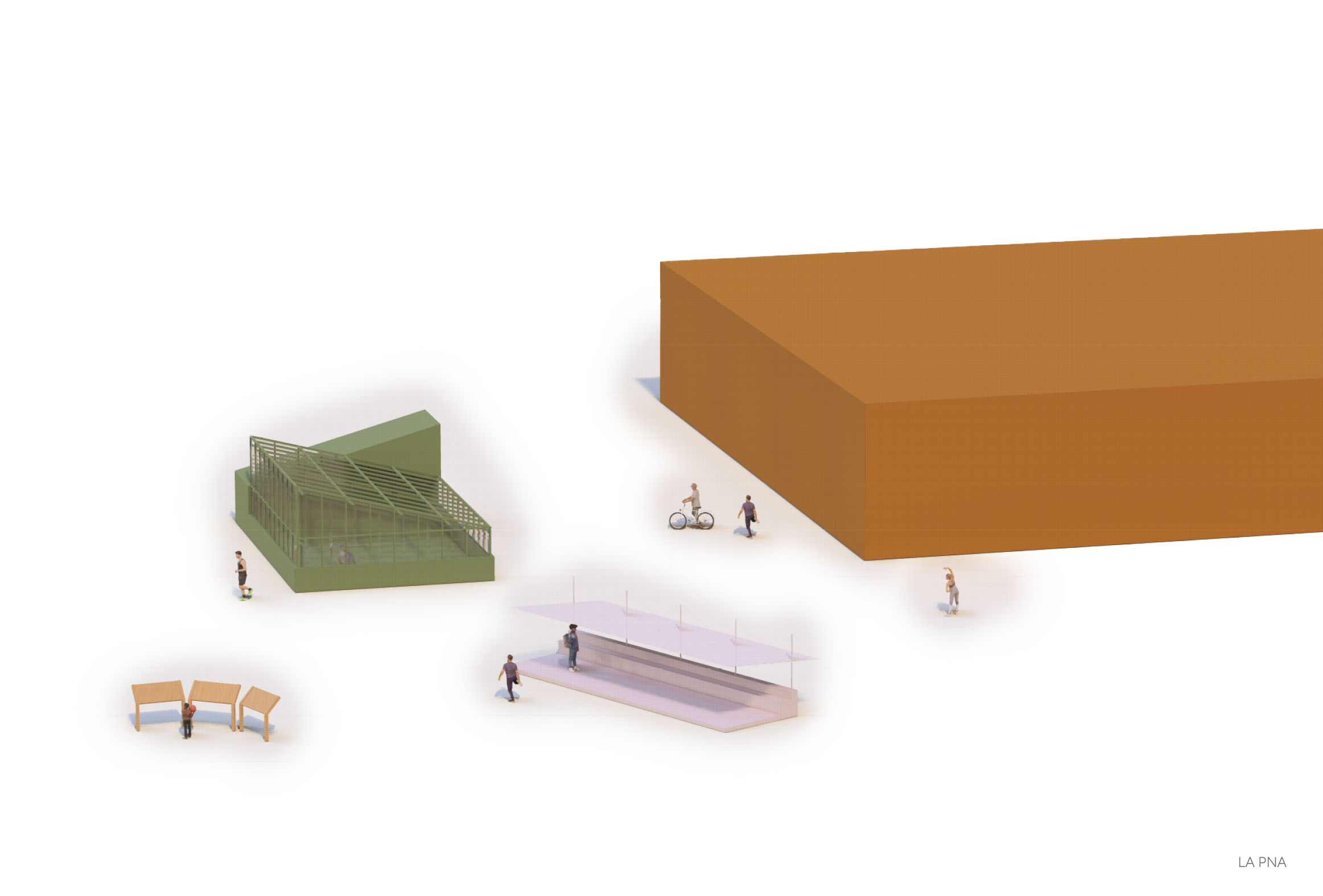Large community parks are designed to serve the recreational and social needs of residents from several neighborhoods. These parks typically offer a variety of amenities such as playgrounds, sports courts, fields, picnic areas, and walking paths, catering to diverse age groups and interests. Due to their size, they may have a greater quantity of amenities than other community parks, and they may have separate trails for pedestrians and cyclists. They often serve as central gathering places, fostering social interaction, physical activity, and a sense of community pride.
Typical Size
20–40
Typical Length of Visit (Hours)
2–3
Typical Access
Large community parks should be accessed by the city’s trail network, sidewalks, and major streets. Like smaller community parks, they should include on-site parking to support their wider service area.
Typical Amenities
Infrastructure
Typical Architectural Elements
Guidelines for Large Community Park
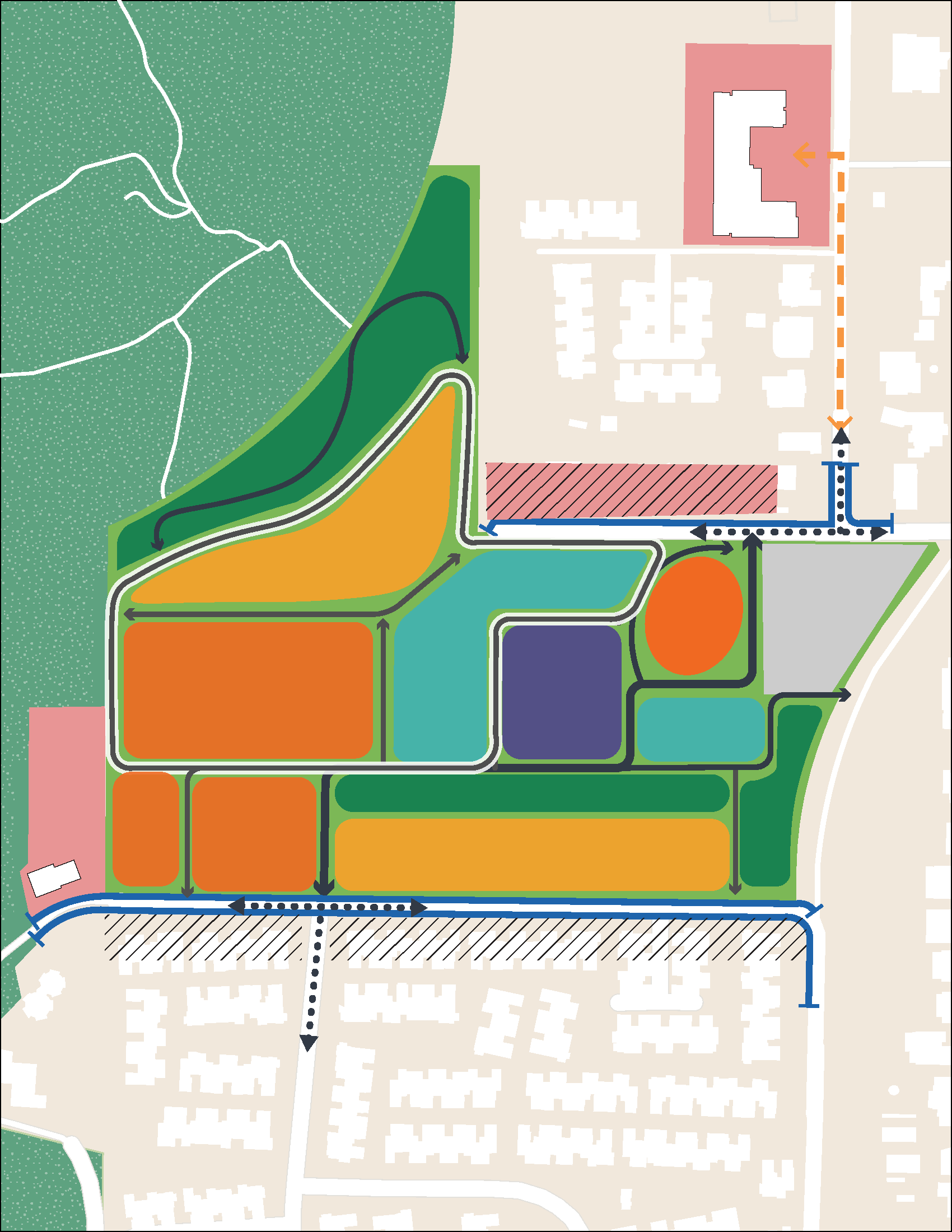









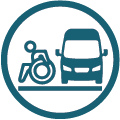










Connectivity
Loop Trail
Connectivity
Seamless Public Space
Zones
Casual Use Areas
Zones
Recreation Areas
Zones
Natural Systems
Infrastructure
On-Site Parking
Infrastructure
Safe Crossings
Zones
Programmable Gathering Areas
Zones
Intensive Use Areas
Context
Streetscape Enhancements
Infrastructure
Safe Crossings
Infrastructure
Accessible Van Parking and Drop-Off
Infrastructure
Bike Parking
Connectivity
Internal Walking Trail
Infrastructure
Shared Parking
Wayfinding
Gateways (Primary & Secondary)
Wayfinding
Gateways (Primary & Secondary)
Walking pathsseamlessly
connect to
adjacent
recreation
areasCOUNTY PARKS
PROPERTYAdjacent residential
uses face park
and include street
improvementsAdjacent park uses are
mixed and support the
park programming
Infrastructure
Comfort Facilities
Infrastructure
Transit Stop
LIBRARYAccessible corridorto local institutions
Context
Park Supportive Uses
Wayfinding
Universal Wayfinding Signage
Programmablegathering and
intensive uses
support local
communityCasual use space
connects back into
neighborhood
Wayfinding
Gateways (Primary & Secondary)
Connectivity
Street Grid Connectivity
Connectivity
Safe Routes / Passages
Connectivity
Trail Mode Separation
Design
Context
Connectivity
Wayfinding
Infrastructure
Zones
Architectural Elements
Guidelines for Large Community Park - Architecture
Architectural Recipe
(2-4) Small Elements + (1-2) Medium Elements + (1-2) Large Element
